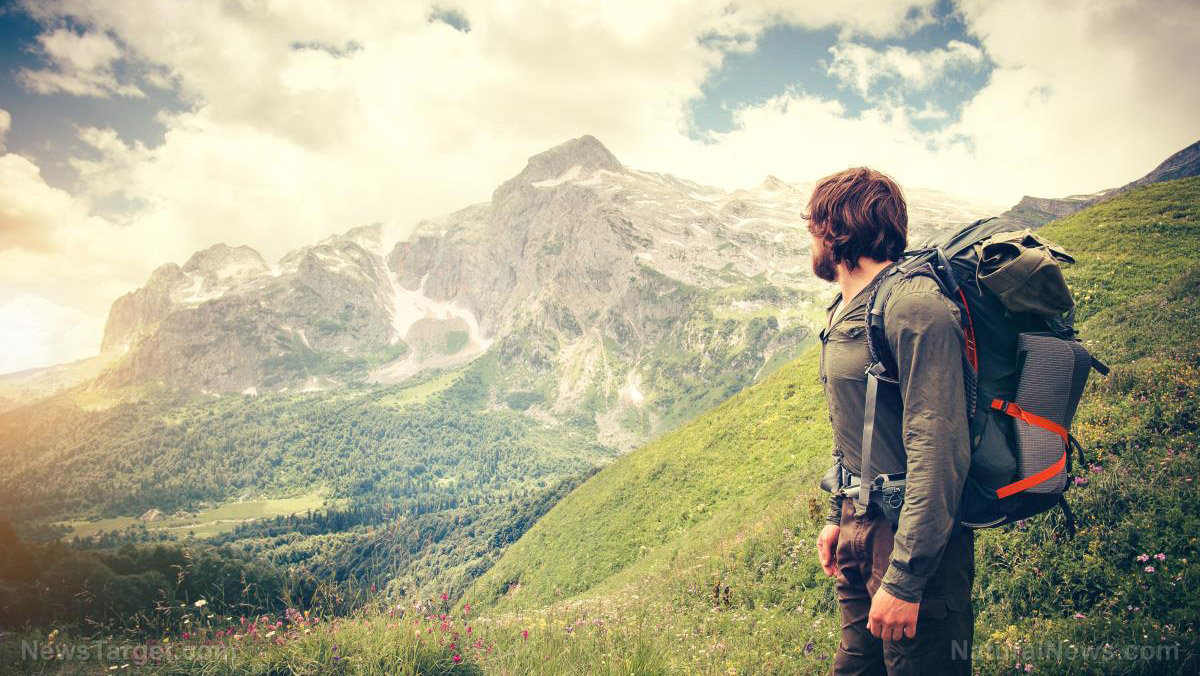High altitude survival: What you need to know about making it in the mountains
01/16/2018 / By Zoey Sky

Preparedness is crucial to surviving in the wild, and knowing how to survive in a high-altitude mountain can benefit anyone from hiking beginners to survival pros.
Surviving mountain dangers
Mountain life can be dangerous. Keep the tips below in mind to survive if you find yourself in a high-altitude mountain:
- Prepare for the coldest nighttime temperature – When traveling by a small private plane or a large commercial aircraft, as soon as it goes down, what you’re wearing can decide whether you survive the crash or not.
- Always have critical survival gear in your pockets – Carry survival gear in your pockets so you can access it should you lose your baggage. Bring some petroleum jelly, which can prevent wind burn and even be used to start fires.
- Read up on wild edibles – Knowing what you can and can’t eat is crucial to your survival. Cladonia rangiferina/reindeer lichen is a common and easily identified edible medicinal plant. It grows in alpine tundra.
- Boiling water – Keep in mind that water “boils at increasingly lower temperatures as altitude increases because air pressure decreases.” Water is safe to drink once boiled even if you’re in the highest mountains.
- Acclimate to altitude – The faster you ascend to altitude and the higher you climb, the risk of getting altitude sickness increases. Getting a headache and at least one other symptom in a day or two of ascent could mean that you have altitude sickness.
- Avalanche safety – Try to travel upon ridges because they’re safer than climbing slopes, but steer clear of cornices and other overhangs if you do so. Avoid slopes of 30-45 degrees and stay out of the track, or the path the avalanche will take.
While traveling is supposed to be relaxing, you can’t go wrong by preparing for any disaster. To stay alive, practice these skills, explore your limits, and read up on other survival tips that can help you no matter what situation you find yourself in. (Related: Guidelines for choosing clothing and accessories for any survival situation.)
How to deal with altitude sickness
Regardless if you’re on a hike with friends or stranded on a high-altitude mountain by accident, knowing the symptoms of acute mountain sickness (AMS) and how to deal with them can save your life.
AMS or altitude sickness is easy to prevent. Just follow some basic precautions before and during your hike. Altitude sickness refers to various symptoms that may occur when an individual tries to ascend too quickly at altitudes above 2,500 meters (m) ( or 8,202 feet [ft]).
When the altitude increases, atmospheric pressure decreases. This means less oxygen is available to the body’s tissues, which can make the heart and lungs work overtime to compensate. When you ascend at a rate that your body hasn’t had sufficient time to acclimatize to the change in atmospheric conditions, you may feel some of the symptoms of altitude sickness.
Initial symptoms of AMS include headaches, dizziness, nausea, shortness of breath, difficulty sleeping, and extreme lethargy. Advanced/severe symptoms include rapid pulse, irrational behavior, loss of balance and coordination, severe headache, vomiting, and persistent cough.
To prevent AMS, acclimatize gradually. We acclimatize at different rates so take the necessary precautions and listen to your body to recover from the symptoms of AMS.
If you feel any of the mild AMS symptoms, don’t try to climb any higher. Stay dehydrated, and get some rest. It might take a couple or three days before the symptoms subside. When you’re feeling better, you can start ascending again. Climb slowly and with awareness of your surroundings and your condition.
When you feel some of the severe symptoms of AMS, descend as quickly as you can (at least 500 m/1,640 ft). Get medical attention right away. Remember that if your symptoms are severe, even Diamox or any other medication (such as Dexamethasone) will not give you any relief. The best thing to do is to descend.
You can learn more about prepping and survival at Bugout.news.
Sources include:
Submit a correction >>
Tagged Under:
acute mountain sickness, AMS, bugout, guides, high altitude, high altitudes, high-altitude mountain survival, hiking, mountain survival, preparedness, prepping, survival, survivalist, travel
This article may contain statements that reflect the opinion of the author






















